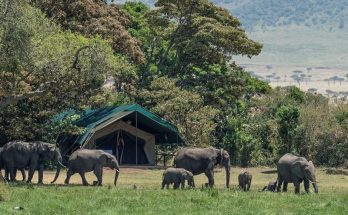IBNS/On the occasion of World Environment Day recently, World Wide Fund for Nature’s (WWF’s) Neha Raghav took school children of classes 6-8 on a virtual nature trail to spread the love and boundless joy of comprehending nature during an online Prabha Khaitan Foundation (PKF) event titled Muskaan, presented by Shree Cement. Nitin Waghela brings you the excerpts of the conversation
Could you shed light on the functioning of the World Wide Fund for Nature in India?
WWF set foot in India in 1969. It has field officers in 75 locations who work to protect various habitats and landscapes.
The organization majorly looks at stopping forest degradation, protecting species from being illegally traded, ensuring clean energy for villagers, and enlightening the future of India.

What should the younger minds be aware of when it comes to the importance of trees?
Trees stand for biodiversity acting as shades for both animals and birds while capturing carbon and adding to the beauty of their immediate environment.
The protection that trees offer from soil erosion by stabilizing it and the oxygen that sustains life itself is something every child should know of.
How can future generations contribute to the conservation of trees?
The youngsters can take steps regularly by being selective in what to print, avoiding any waste of paper, and can also look around for sustainable paper. Most importantly, all of them should start planting trees.
What are the major problems connected with nature which we face today?
The need for food has enhanced and therefore the need for land for agricultural produce has also risen which results in major food-related issues. Man-made forest burning activities and timber logging are also serious problems that should be dealt with.
The excessive concretization in cities like Delhi has led to the uprooting of trees because it leaves no growth space for the roots. Nailing signboards are also a sign of lack of awareness and ironically you will find ‘Dont Nail On Trees’ signs which are themselves nailed on the bark of trees.

What can children learn by consciously interacting with nature?
Through a nature trail, kids can identify trees based on the surface of the bark, fruits that they bear, and the structure of their leaves – compound or simple.
For instance, the neem leaf is a compound one while the leaves of a mango tree are simple. The little ones can pick up on such indicators to help them develop a relationship with nature.
How can the kids begin to cultivate a bond with the environment?
Parents can play an important role by taking them to green spots or even standing with them on the balcony and helping them understand the various birds or animals they don’t know about.
This helps in connecting with nature on a daily basis. Children themselves can also take steps to interact with nature by hugging a tree next time they spot one. More importantly, they should have a sharp set of ears, and be curious, patient, and enthusiastic to know more about the different birds and animals that live with us.
#WorldEnvironmentDay, #WWF, #PrabhaKhaitanFoundation, #Children, #Delhi





